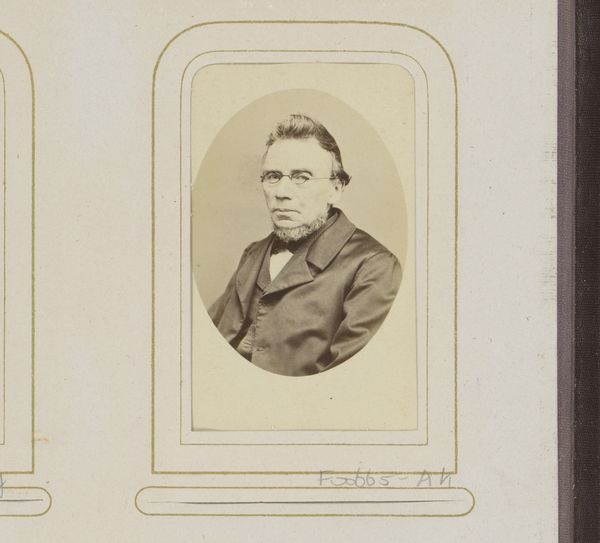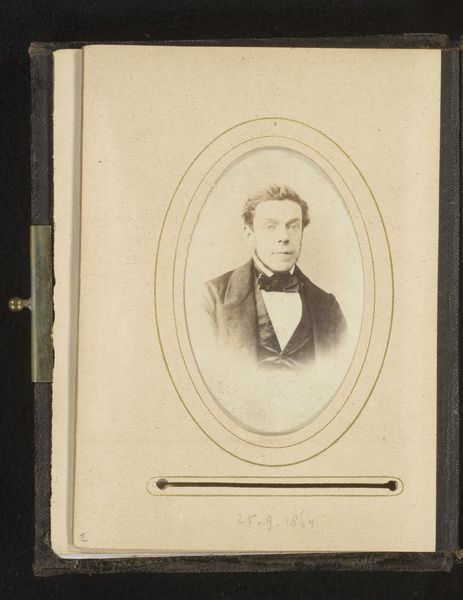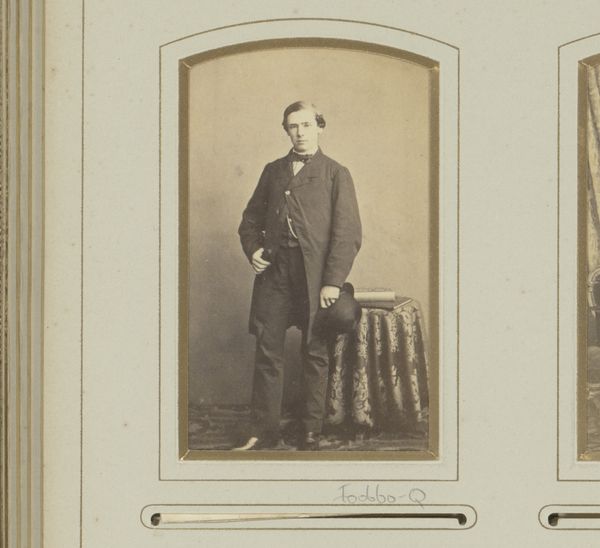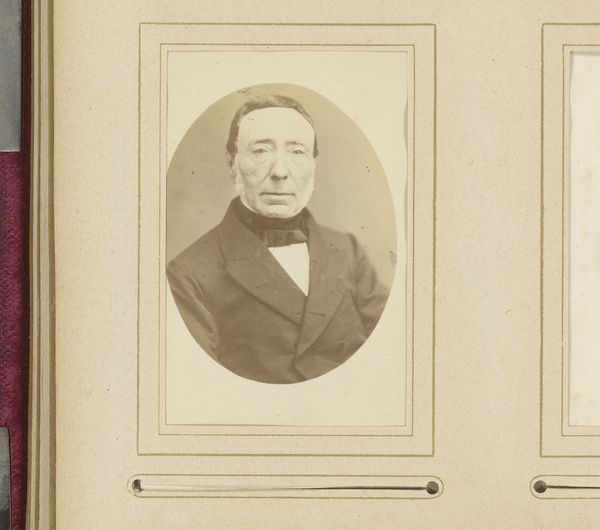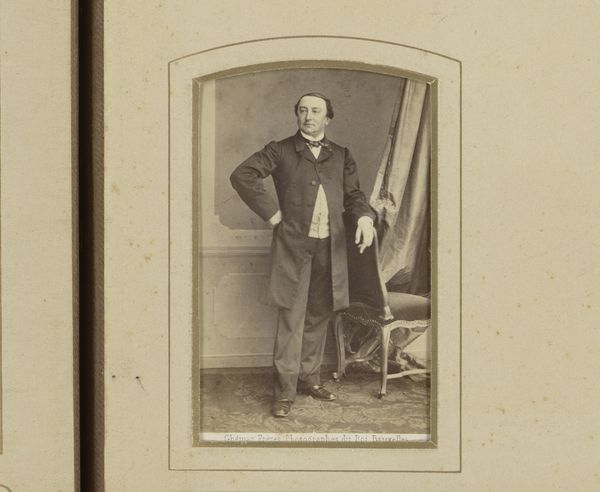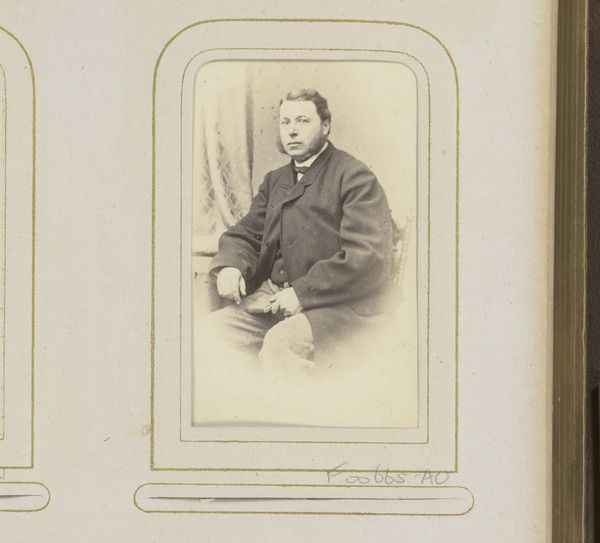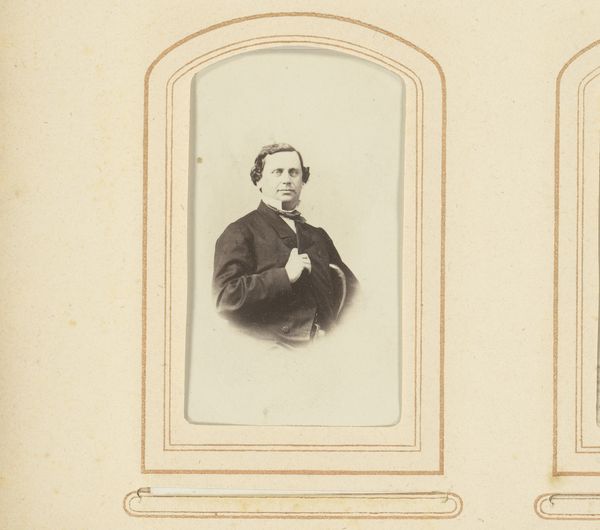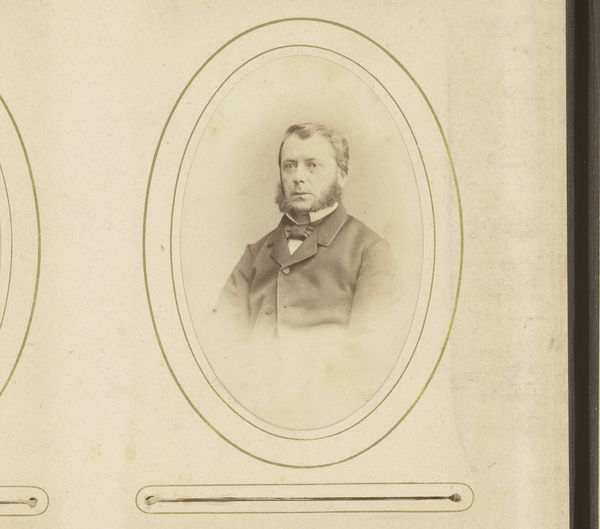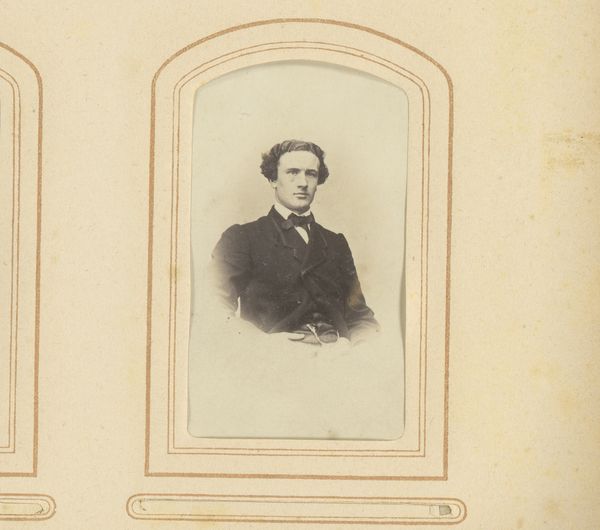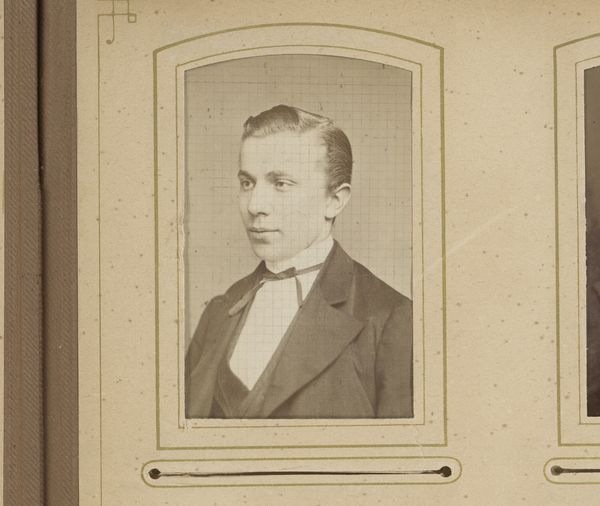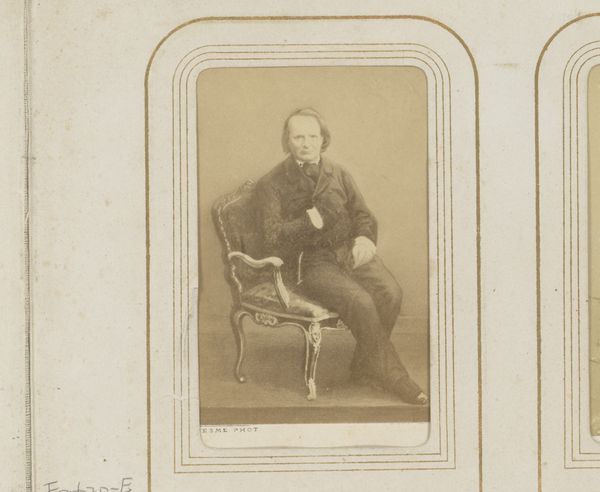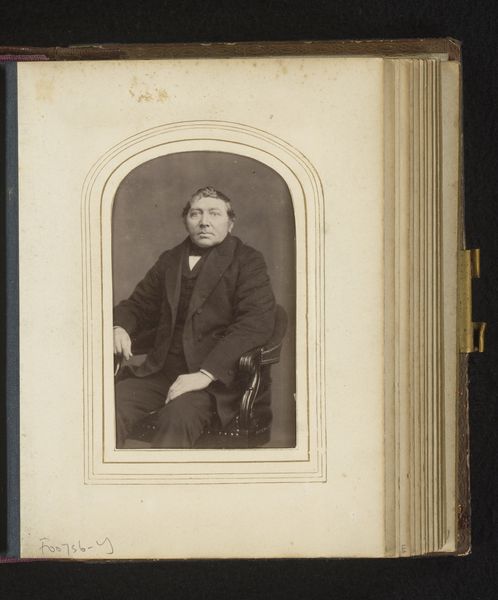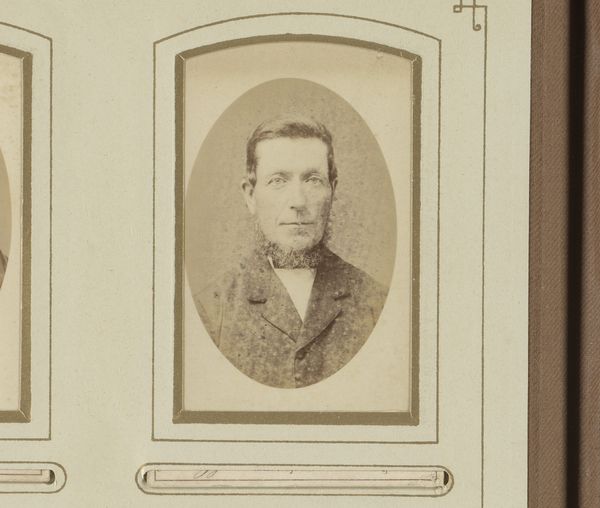
Dimensions: height 82 mm, width 50 mm
Copyright: Rijks Museum: Open Domain
This is a photograph of a man, made by Johannes Hinderikus Egenberger. It's a small print, likely made using the albumen process, which was popular in the mid-19th century. This involved coating paper with egg white and then a silver solution, creating a surface that was highly sensitive to light. The resulting image has a distinctive sepia tone and a smooth, almost porcelain-like surface, made through careful darkroom work. What's interesting here is the democratizing effect of photography. Before this time, portraiture was the preserve of the wealthy, but with photography, more people could afford to have their likeness captured. This raises fascinating questions about labor and class. The photographer, like any other tradesperson, was providing a service, and the sitter, in turn, was participating in a new kind of visual culture. The photograph itself becomes a kind of artifact, an index of its historical and social context. So, when we look at this portrait, we're not just seeing an individual, we are understanding a whole world of materials, processes, and social change.
Comments
No comments
Be the first to comment and join the conversation on the ultimate creative platform.
